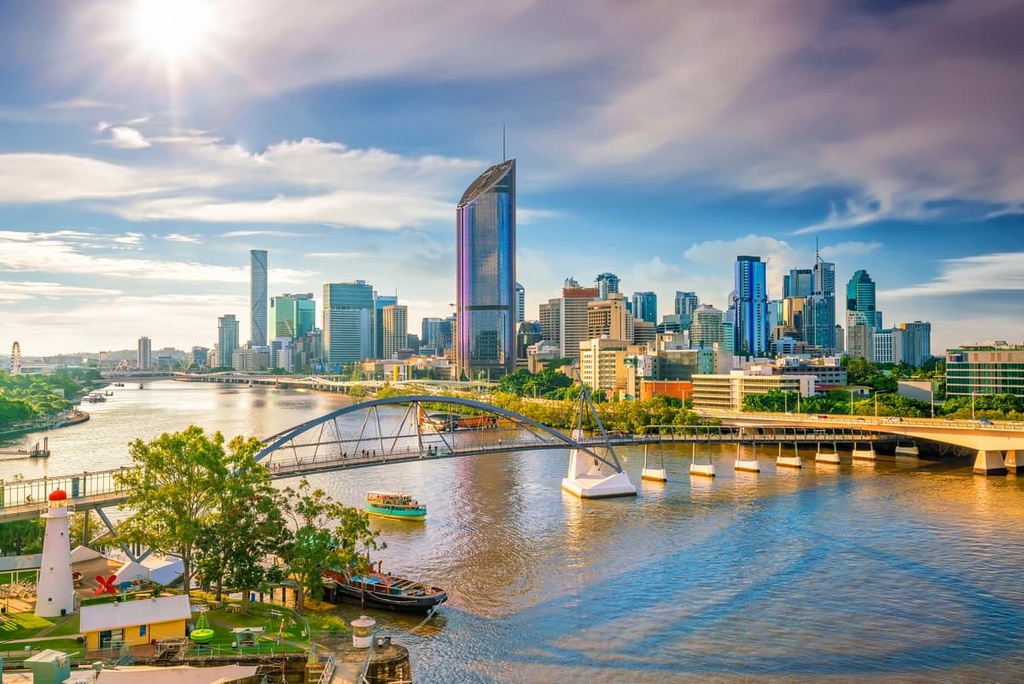Get PeakVisor App
Sign In
Search by GPS coordinates
- Latitude
- ° ' ''
- Longitude
- ° ' ''
- Units of Length

Yes
Cancel
Share ×

Scan the QR code and open PeakVisor on your phone
❤ Wishlist ×
Choose
Delete
Daintree National Park is a protected rainforest area located in the Far North region of Queensland in Australia. It’s part of the Wet Tropics of Queensland, which is recognized as a UNESCO World Heritage Site. The park is divided into two distinct sections, Mossman Gorge and Cape Tribulation, and it is home to 22 named mountains. The highest and most prominent mountain in the park is Thornton Peak (1,357 m/4.452 ft).

Daintree National Park covers an area of around 120,000 hectares (296,526 acres) in the northern part of the Australian state of Queensland.
The national park is part of the Wet Tropics of Queensland, which is UNESCO World Heritage-listed for its biodiversity and ecological significance. The region’s dense rainforest is part of the largest continuous tropical rainforest on the continent and is considered to be one of the oldest living rainforests in the world.
The park is divided into two main sections: Mossman Gorge and Cape Tribulation. The Daintree River serves as the central dividing line between these two sections of the park.
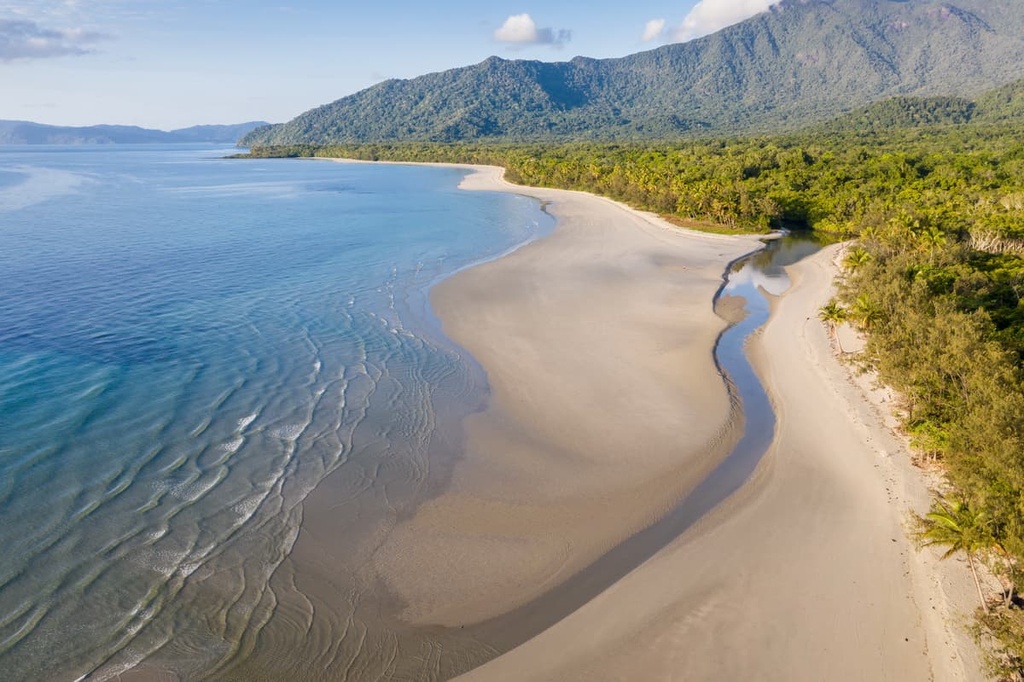
Mossman Gorge is part of the Great Dividing Range. It covers around 56,500 hectares (139,614 acres) of mostly inaccessible and dense rainforest to the south of the Daintree River. The main gorge is located in the southern part of the park, and it is one of the most visited places in Far North Queensland.
Cape Tribulation covers an area of around 17,000 hectares (42,008 acres), including the coastal range north of the Daintree River. It boasts some of the more distinctive peaks in the park, including Thornton Peak (1,357 m/4,452 ft), Mount Hemmant (1,078 m/3,536 ft), and Mount Sorrow (787 m/2,582 ft). The area is also known for its pristine beaches, which are located right next to a rare beachside rainforest.
The national park is home to three key rivers: Mossman, Bloomfield, and Daintree. The Mossman River is found in the lower section of the park, while the Bloomfield River and the Daintree River are situated further to the north. The Daintree River, in particular, is a major part of the rainforest ecosystem in and around the park.
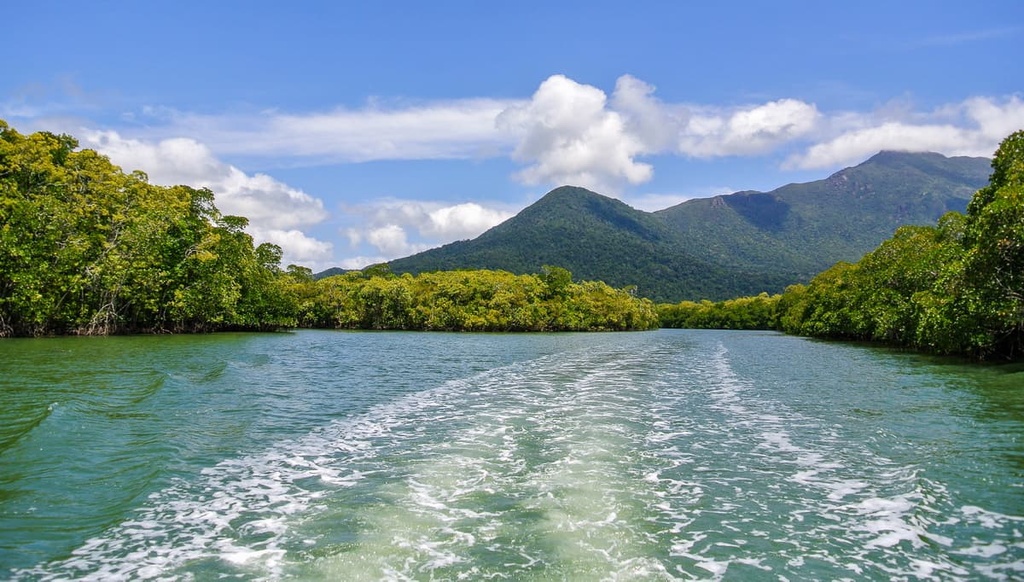
As Daintree is part of one of the most extensive rainforests in the country, there are other national parks to check out in the area, too. You could easily combine a trip to Daintree with a journey to Mount Lewis National Park, Mount Windsor National Park, Cedar Bay National Park, or Kuranda State Forest.
The area that is now Daintree National Park began to form millions of years ago under the sea when Australia was still part of the greater continent of Gondwana.
Over time, the movement of the Earth’s crust lifted the region’s marine deposits, which created a huge area of metamorphic and granite rock above sea level. Millions of years of erosion have slowly exposed the harder underlying granite and formed the dramatic coastal ranges that make up part of the Daintree National Park that you see today.
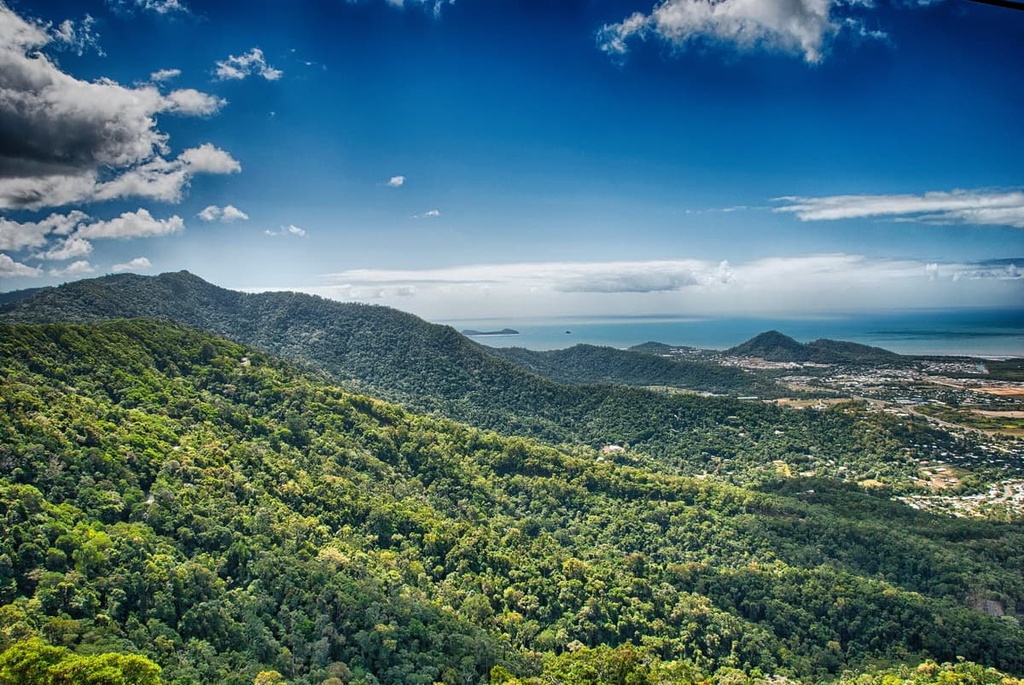
The granite rock of the Daintree National Park has been covered in a dense, wet rainforest for millions of years. It’s estimated that the unique plants and animals of the park have evolved in the area over 180 million years, making it arguably the oldest living tropical rainforest in the world.
Daintree National Park is part of the largest continuous tropical rainforest in Australia. As it is part of the Wet Tropics of Queensland, the rainforest has been recognized for its biodiversity and unique flora and fauna as a UNESCO World Heritage Site.
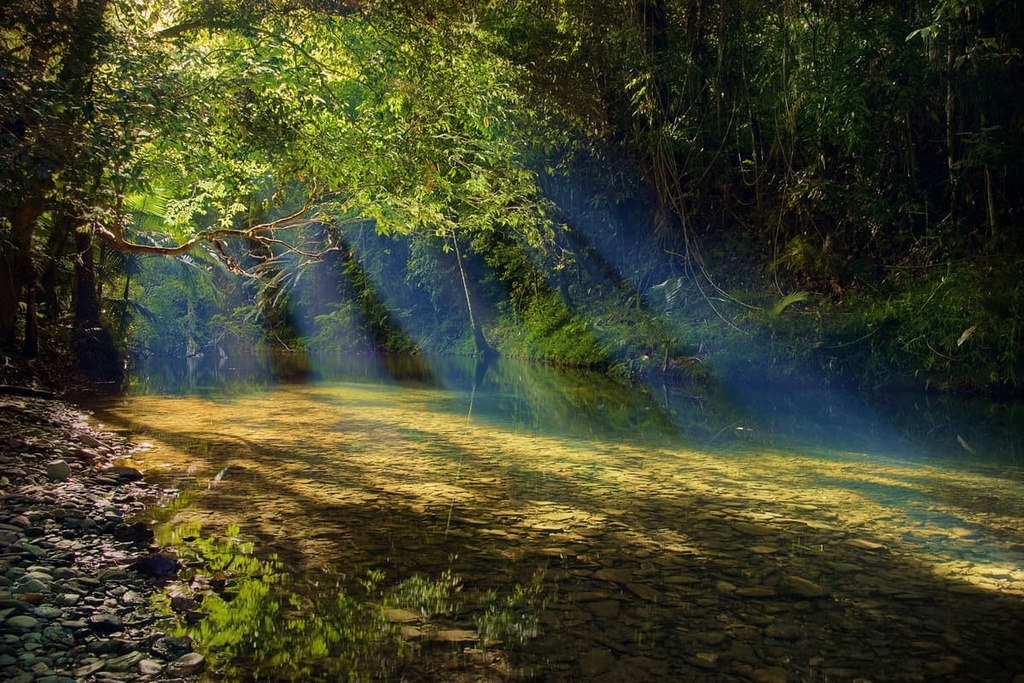
Remarkably, many of the plants and animals found in the park today have changed very little since the last major glaciation, making it a fascinating region of the world. Most of the world’s 19 primitive plant families can be found in and around the national park.
Some of the most significant plants in the area include the primitive she-oak Gymnostoma australianum (a pine-like tree found north of the Daintree River), Noahdendron nicholasii (a tree that produces a pink flower spike and that is found nowhere else in the world), and Idiospermum australiense (an ancient tree found in the lowland rainforest near Cape Tribulation).
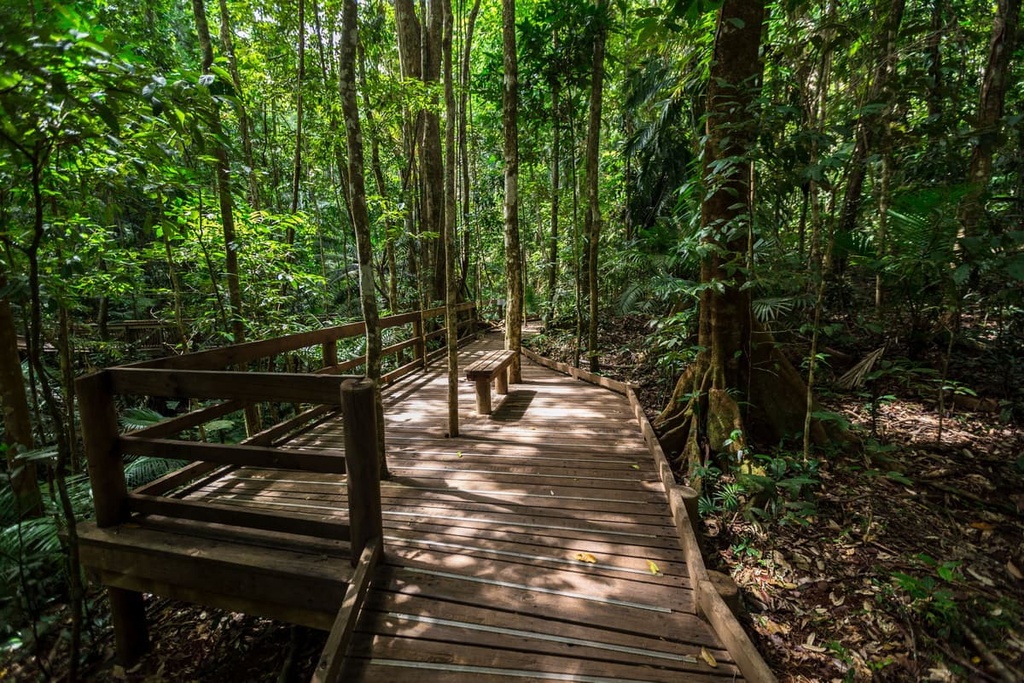
Daintree National Park is home to many endemic animals, which means that they are found nowhere else in the world. Many of these species have evolved directly from their ancient ancestors that once roamed this area while others are from more recent introductions from Asia.
Some of the most notable animal species that live in the park include the Daintree River ringtail possum, musky rat-kangaroo, Bennett’s tree kangaroo, spotted-tailed quoll, swamp wallaby, and giant white-tailed rat. You’ll also find over 20 species of reptiles in the park, including the eastern water dragon, Boyd’s forest dragon, amethystine python, and both scrub python and crocodiles in the Daintree River.
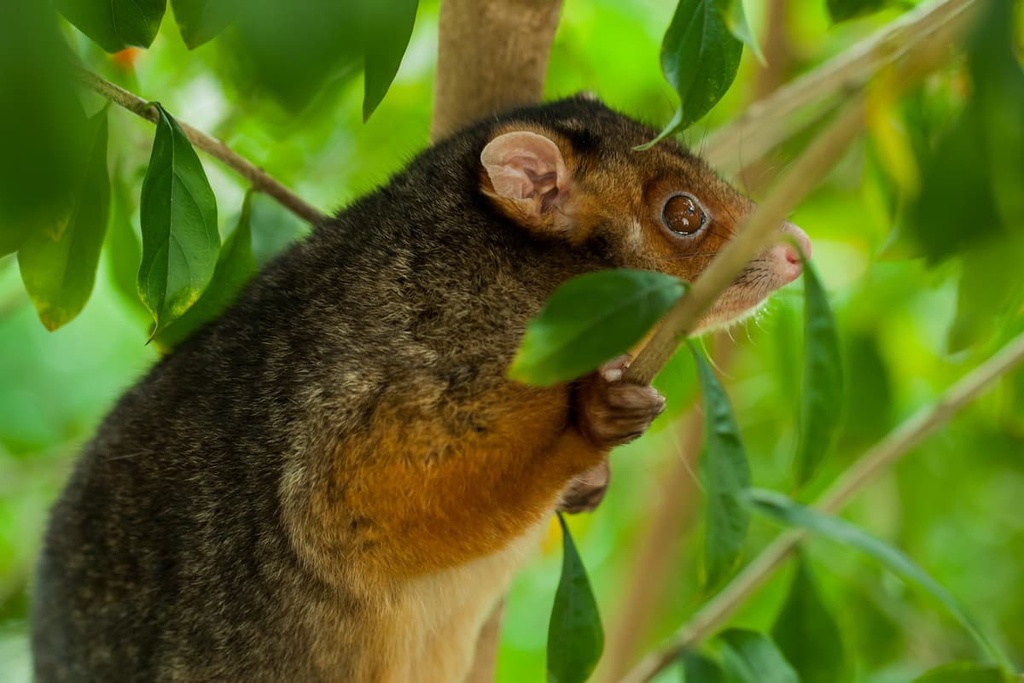
There are also hundreds of bird species found in Daintree National Park. Some of the most notable birds that live in the region include the Australian brush-turkey, orange-footed scrubfowl, and azure kingfishers. There are also some migratory birds found in the park that travel south from Asia during the warmer months, such as the buff-breasted paradise kingfisher and the pied imperial pigeon.
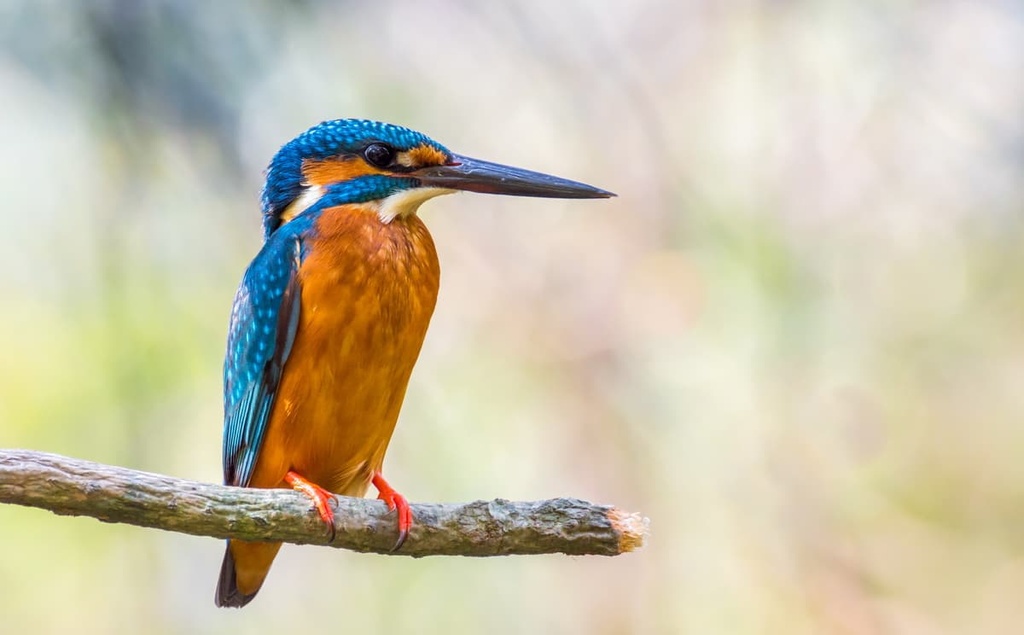
One of the most iconic birds found in the national park is the flightless southern cassowary. At two meters (6.5 ft) tall, these incredibly fascinating and ancient birds are the only animals capable of eating the largest of the rainforest’s fruits and spreading their seeds over the vast area. They are currently listed as endangered in Australia.
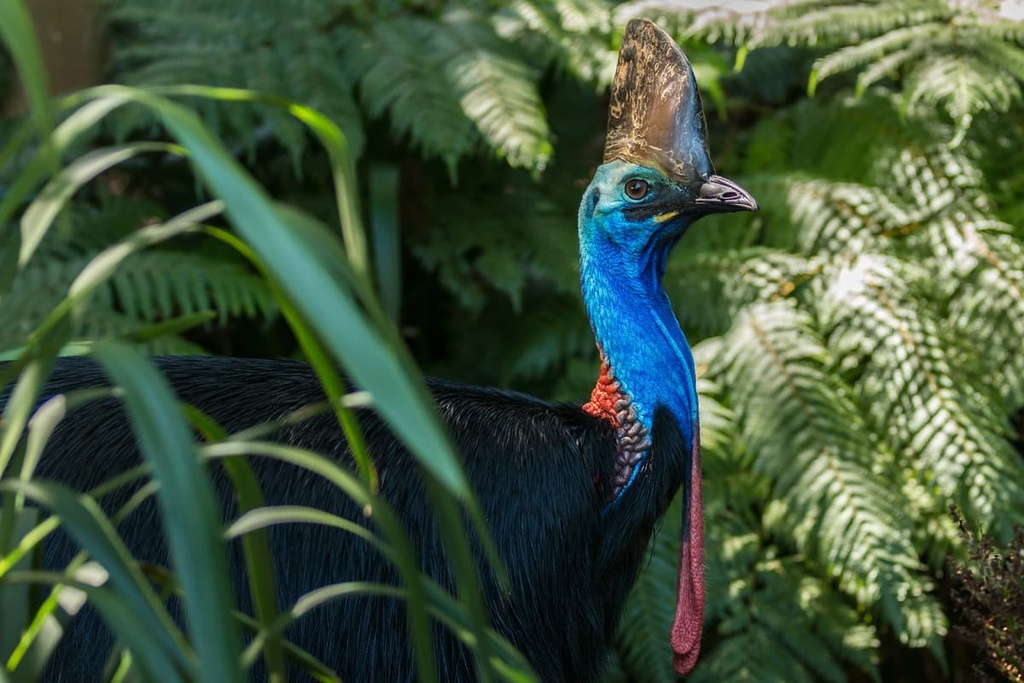
The Eastern Kuku Yalanji people are the Traditional Owners of Daintree National Park and their ancestors have lived in the region for millennia. They were historically able to thrive in the area due to the fact that the land boasts a rich variety of plants and animals, which traditionally provided a reliable food source for residents of the region throughout the year.
Many of the park’s features have spiritual and traditional significance for the Kuku Yalanji people, including Wundu (Thornton Peak), Manjal Dimbi (Mount Demi), Wurrmbu (The Bluff), and Kulki (Cape Tribulation).
In 1873, George Elphinstone Dalrymple led the first European exploration into the Daintree Valley. He gave the river its English name in honor of Richard Daintree, a prominent geologist and one of his friends. The area was later deemed suitable for agriculture and forestry, which prompted timber-getters to arrive in the region in pursuit of valuable red cedar.
Farming expanded across the area in the 1880s and large parts of the rainforest were cleared for agricultural purposes. Extensive parts of virgin hardwood forest were logged in the early 1900s and the road system was extended to Cape Tribulation to support the industry.
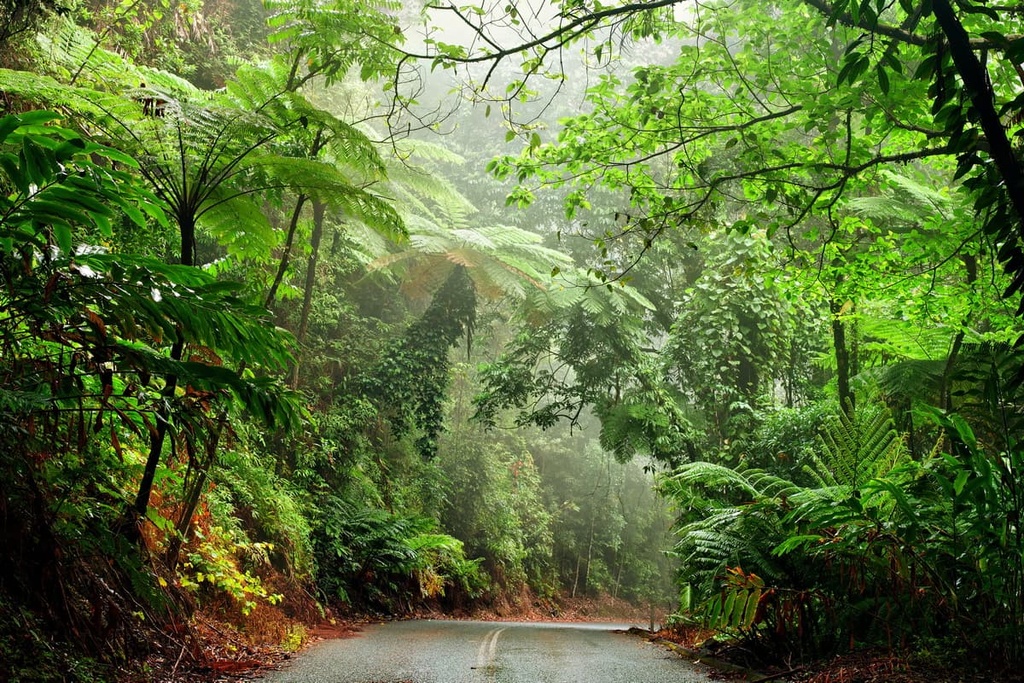
In 1967, Mossman Gorge was declared a national park and the last remaining tropical lowland rainforests in the area were protected with the declaration of Cape Tribulation National Park in 1981. They were later amalgamated into Daintree National Park.
A few years later, in 1988, Daintree National Park was recognized internationally with its listing as a Wet Tropics World Heritage Area. In 2021, a deal was made with the Queensland state government to hand back the formal ownership of the national park to the Eastern Kuku Yalanji people.
While it’s not necessarily known as a hiking destination, there are still plenty of opportunities to explore the gorges and rainforests of Daintree National Park on foot. You’ll find hiking trails in both sections of the park, including a mix of casual coastal boardwalks and challenging climbs to viewpoints.
Here are some of the best hikes in Daintree National Park to check out on your next visit to the area.
These are some of the main hikes in the Mossman Gorge section of the national park.
Lower River Track
The Lower River Track is a casual and short walking trail that allows people of all ages to wander along the clear waters and huge boulders of the gorge. This 650-meter (0.4 mi) return walking trail starts from the Mossman Gorge Day Use Area and includes numerous viewpoints along the way.
Rainforest Circuit
The Rainforest Circuit is one of the most popular walking trails in Mossman Gorge. This 3.4 km (2.1 mi) circuit takes you deep into the rainforest. It boasts a walking track that leads beyond the Rex Creek Bridge and tracks through the cool and damp forest. On this hike, you can enjoy colorful butterflies, ancient trees, and views of Mount Demi (1,070 m/3,510 ft).
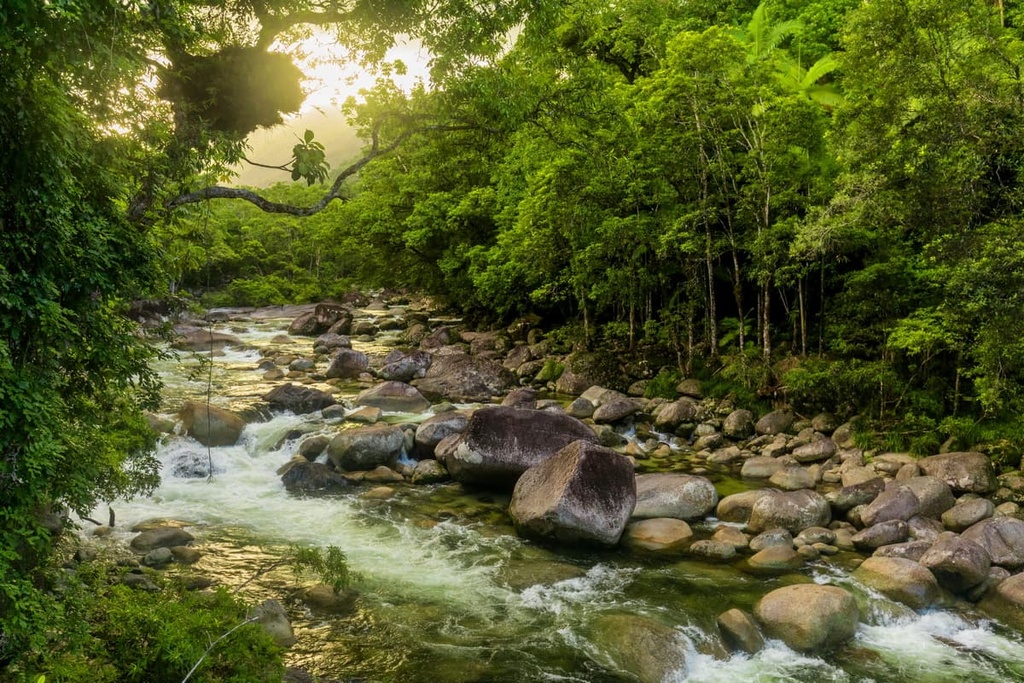
Manjal Jimalji (Devils Thumb)
For a more challenging hike in the Mossman Gorge area, Manjal Jimalji is a great choice. This trek is perfect for experienced hikers who are looking to discover the unique vegetation of the lowland rainforests on a day hike. Note that Manjal Jimalji is the Eastern Kuku Yalanji name for the area, but it is often referred to as Devils Thumb in English.
You need to be prepared for steep climbs and slippery rocks on this 10.6 km (6.5 mi) return hike. This is a very challenging trail, and it is generally only recommended between May and November each year as this is when conditions are most favorable.
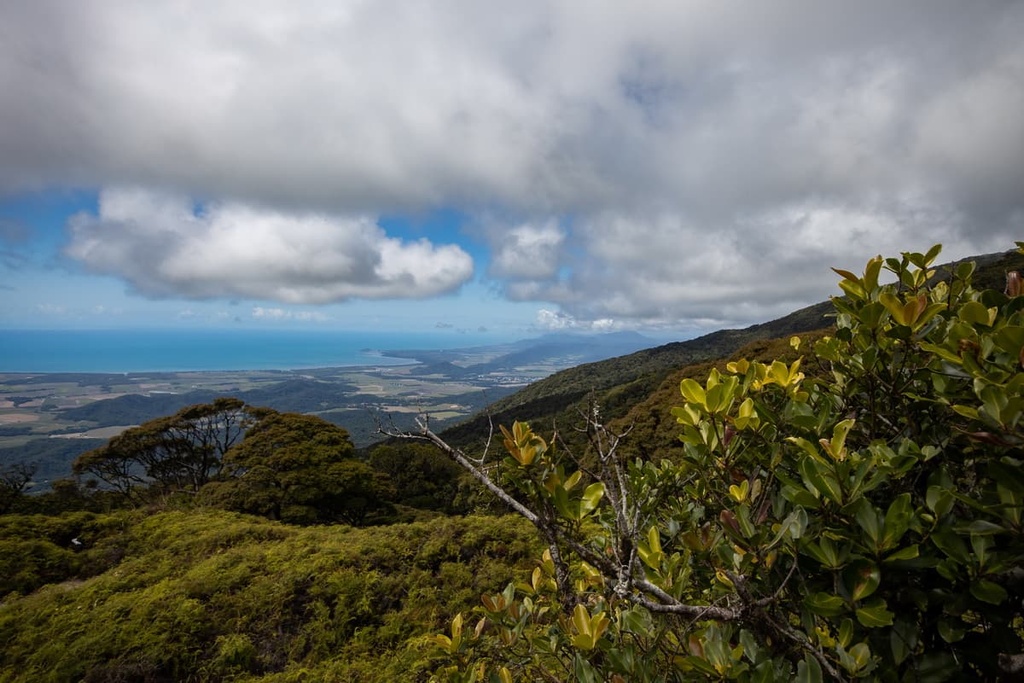
The trail starts at Little Falls Creek and climbs steeply above the forest canopy to stunning views over the area from a clearing. From this point, you can continue another 4 km (2.5 mi) round-trip to the lookout.
However, keep in mind that you must be comfortable climbing over large boulders and you should have plenty of daylight hours left before you consider trekking to the lookout.
The main hikes in the Cape Tribulation area of the national park are as follows:
Jindalba Circuit
The Jindalba Circuit is a great way to experience some of the last lowland rainforests left in Australia. Jindalba means ‘foot of the mountain’ as the trail takes you across creeks at the bottom of Mount Alexandra (485 m/1,591 ft).
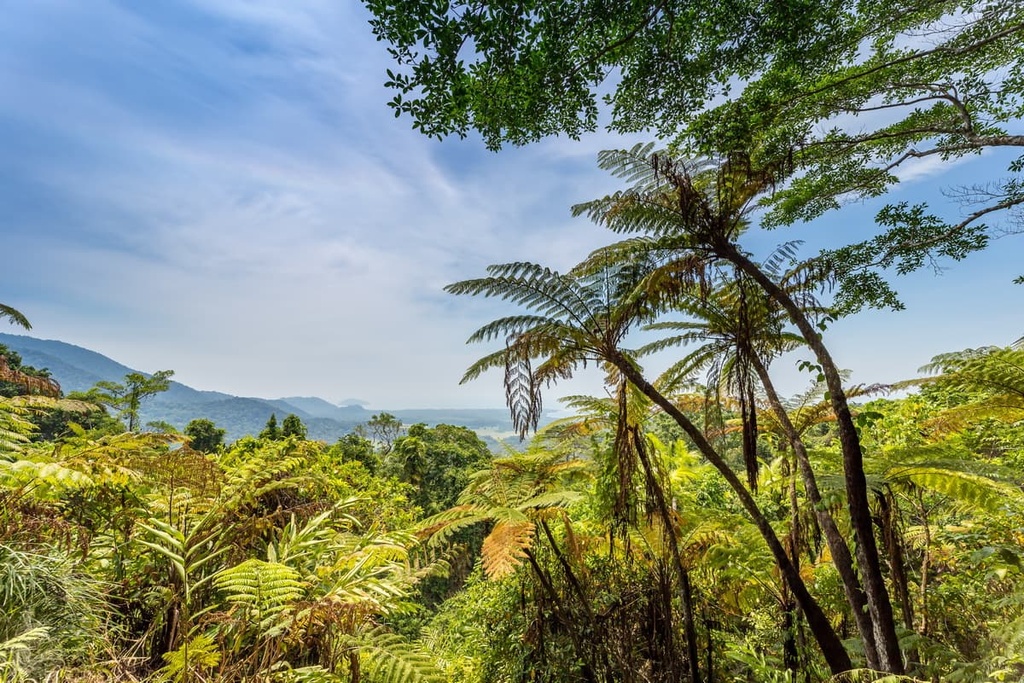
This 3 km (1.85 mi) circuit is a challenging walk over uneven and rocky ground, and it includes multiple creek crossings. It’s quite common to spot some of the major rainforest flora and fauna species on this walk, including large cassowaries, musky rat-kangaroos, Bennett’s tree kangaroos, and buff-breasted paradise kingfishers.
Madja Boardwalk
This convenient walk is a great option for hikers of all ages who are looking to trek through the rainforest of Cape Tribulation.
The Madja Boardwalk is located relatively close to the Noah Beach Campground, and it follows a well-formed boardwalk for a 1.2 km (0.75 mi) loop. This hike is popular as it offers visitors a chance to wander through lowland rainforests and mangrove-lined creeks.
Dubuji Boardwalk
Further north on Cape Tribulation Road, you’ll find another boardwalk and beach to explore. The Dubuji Boardwalk is a 1.2 km (0.75 mi) loop that gives you the additional option to trek down to Myall Beach.
Dubuji means the ‘place of spirits.’ While on this hike, you can keep an eye out for the variety of plants and animals that are found in the mangroves of the park around the boardwalk, including azure and little kingfishers as well as orange-footed scrubfowl. During the winter months, you might even spot humpback whales off the coast of Myall Beach.
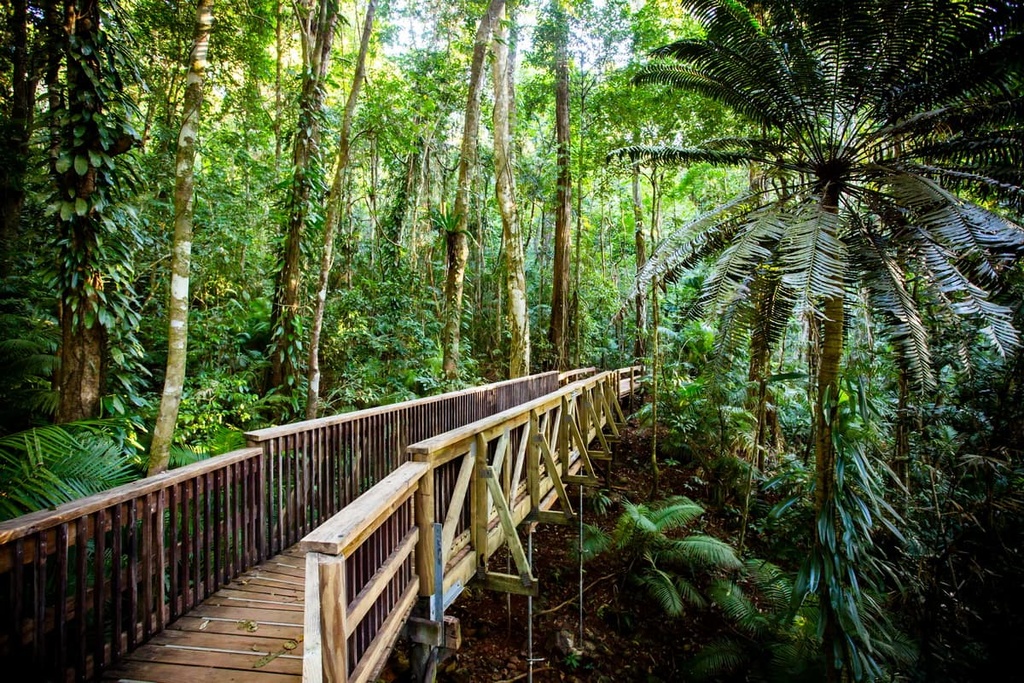
Mount Sorrow
Mount Sorrow (787 m/2,582 ft) offers an incredible opportunity for a more challenging hike in Cape Tribulation. This steep 7 km (4.3 mi) return hike climbs up from the lowland rainforest to the top of Mount Sorrow where you can appreciate stunning views across the surrounding area.
This walk offers an insight into the changing vegetation that comes as you climb to higher elevations in the park. During this trek, you’ll be able to move from the lowland rainforest through to the upland rainforest, where the canopy opens up as you climb higher on the ridge.
From the top of Mount Sorrow, you’ll be able to see right across the Daintree coastline. The mountain offers views to the south of Snapper Island and the shadows of the Great Barrier Reef out in the ocean.

Do note, however, that you should allow yourself plenty of time for this walk and be confident in your fitness level before setting out to climb Mount Sorrow.
If you want to spend the night inside the national park boundary, then there is only one campground available for visitors to choose from: the Noah Beach Campground.
This aptly named campground is located in the Cape Tribulation part of the park near Noah Beach. The campground is a beautiful bush camping area that’s open to visitors with tents, camper trailers, and campervans.
There are 15 sites available at Noah Beach and they must be booked in advance. You can book a site online at the Queensland Parks and Forest Service website.
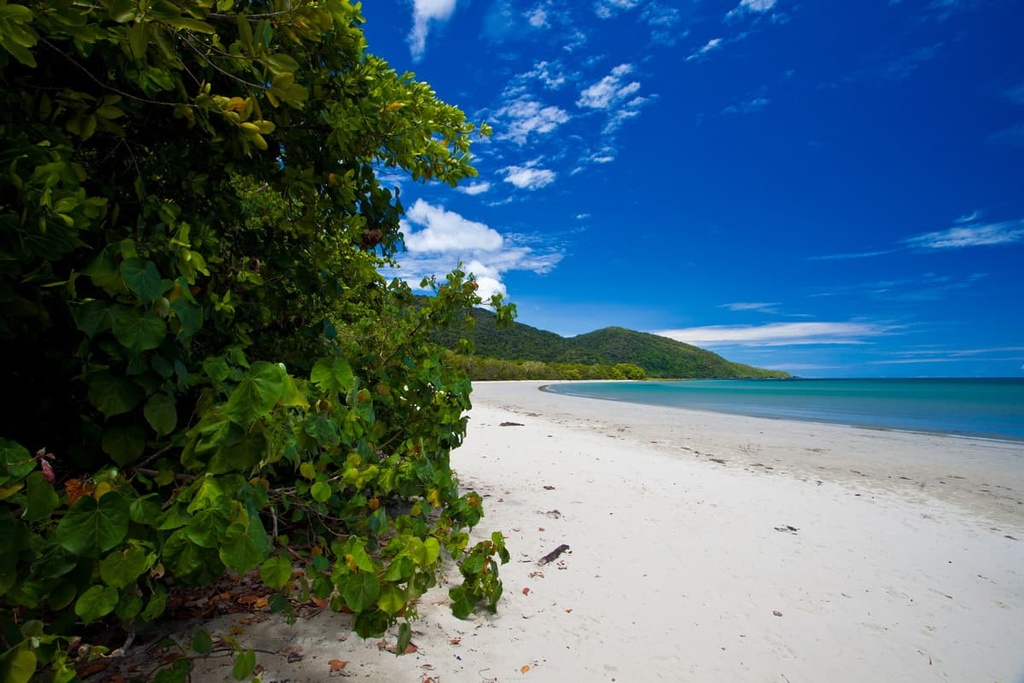
Daintree National Park is a very accessible destination if you’re traveling from the main towns that are located on the North Queensland coast.
You can begin your trip to the park and through both Mossman Gorge and Cape Tribulation from several places. There are also many coastal towns in the area where you can stock up on supplies and find good accommodations during your travels.
These are the main towns located near the national park:
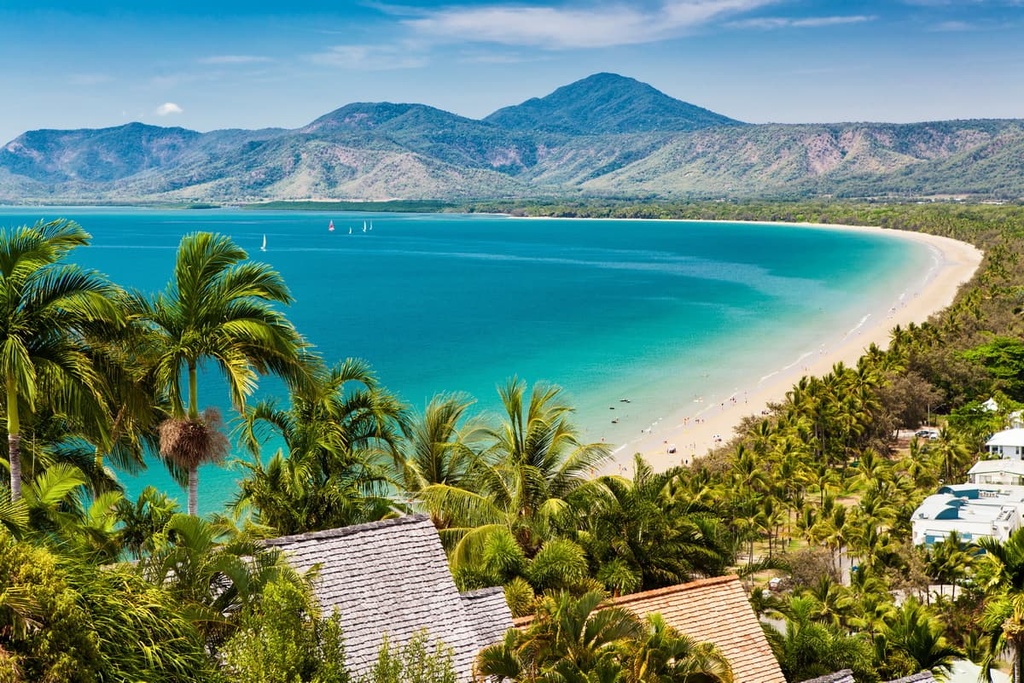
Daintree National Park is located in Far North Queensland. While there are plenty of coastal towns that are situated relatively close to the park, the park itself is still a long journey away from any major cities. If you’re looking to start or end your trip to the national park in a city, then check out one of these options.
Townsville is a coastal city situated on the north coast of Queensland. It’s located 1,330 km (826 mi) to the north of the state capital city of Brisbane.
Townsville is known for its tourist attractions, including the Strand Esplanade, Reef HQ Aquarium, and Museum of Tropical Queensland. You’ll also find Magnetic Island, which is known for its coral reefs and abundance of wildlife, just off the coast of the city.
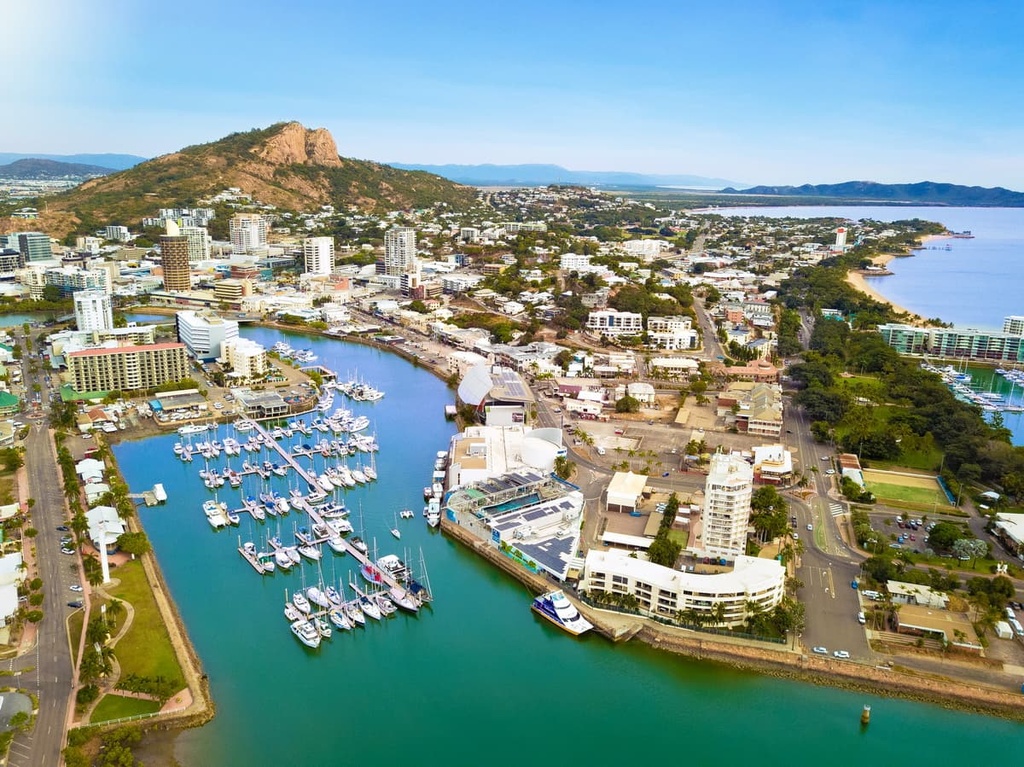
Getting to Townsville is relatively easy as the city has a large domestic airport with flights to most major destinations in Australia. From Townsville, you can also fly to some of the main communities in Queensland.
The closest capital city to Daintree National Park is Brisbane, which is located a staggering 1,760 km (1,093 mi) to the south of the park. Brisbane is well-connected to other major cities in Australia since it has a domestic and international airport as well as connections to major national highways. You can easily begin your trip to Daintree National Park from Brisbane.
Brisbane is the capital of Queensland, and it is located on the east coast of Australia. The city is built along the banks of the Brisbane River and it’s known for its laid-back vibes. Brisbane also boasts stunning beaches, and it is situated just a short drive away from a number of incredible national parks.
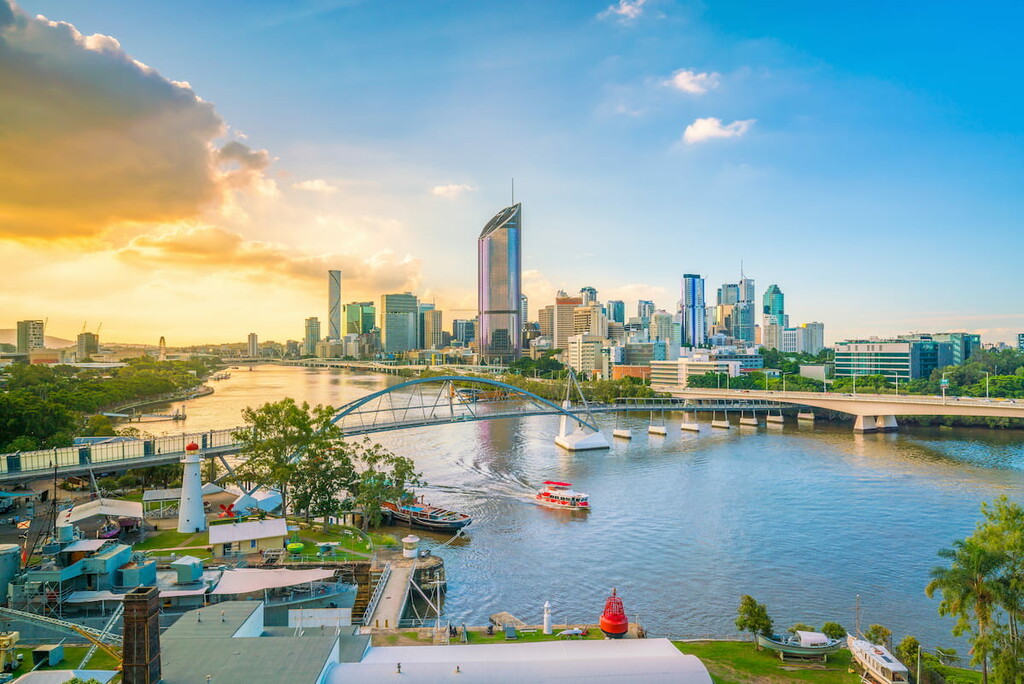
Explore Daintree National Park with the PeakVisor 3D Map and identify its summits.
